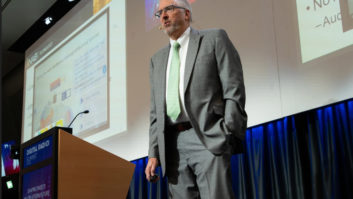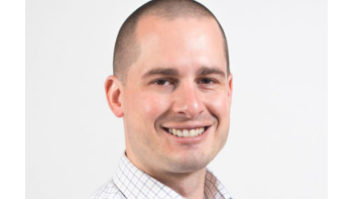
David Layer
In continuing with its examination of AM radio’s problems and possible solutions, the Association of Federal Communications Consulting Engineers Oct. 30 technical symposium invited the NAB’s senior director of advanced engineering, David Layer, to share the results of a recently concluded all-digital AM radio field testing program, as this transmission mode could be key to revitalizing the AM service.
“All-digital AM … is something that keeps AM broadcasters in the band and may be a potential long-term solution for AM radio,” said Layer, who tested digital-only operation system at nine U.S. stations ranging from Class C one kW operations to a Class A 50 kW powerhouse.
In summarizing overall test results, Layer stated that all-digital was definitely superior to the hybrid digital mode now in use.
“In some cases we measured hybrid performance as well as all-digital performance in terms of coverage,” said Layer. “The all-digital signal is significantly more robust than the hybrid, and I can tell you from my own personal experience in driving around that it really works a lot better than hybrid.”
However, he admitted that implementation would not be without problems.
“Losing the existing base of analog receivers is a big deal, said Layer. “Most people listen to terrestrial radio on analog receivers. You go to an all-digital signal and you’re going to lose a lot of listeners.”
Another difficulty to be resolved is a loss in nighttime coverage at some stations. Layer described the all-digital transmission implemented at one station as performing beautifully during the day and greatly enhancing the music-format station’s listening experience.
Nighttime coverage, however, was a different story, with the analog signal still usable at the point where digital coverage failed.
“It was listenable,” said Layer in referring to the analog signal. “It wasn’t great, but you could definitely listen to it. If you were listening a ball game or something you cared about, you’d probably stay tuned in. I think one of the dilemmas for the industry is what to do about night. Daytime coverage is pretty phenomenal, but nighttime coverage — depending on the frequency — can be a lot more limited.”
Layer speculated that some broadcasters might elect to operate in all-digital mode during daytime hours, but revert back to analog at night to avoid loss of listenership.












